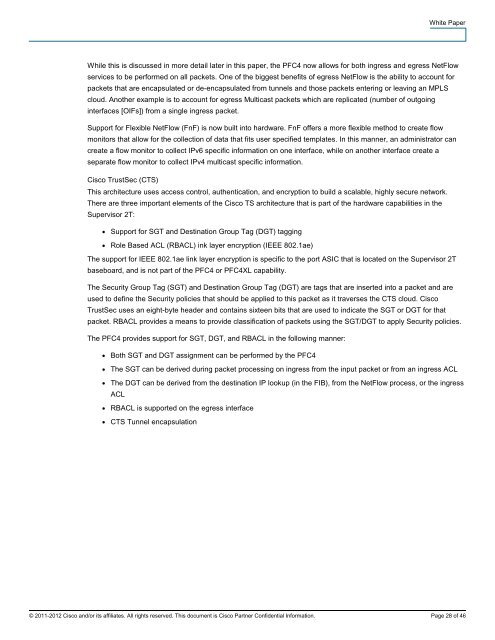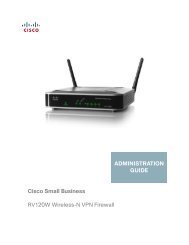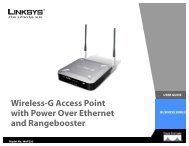Cisco Catalyst 6500 Supervisor 2T Architecture - Ipland
Cisco Catalyst 6500 Supervisor 2T Architecture - Ipland
Cisco Catalyst 6500 Supervisor 2T Architecture - Ipland
Create successful ePaper yourself
Turn your PDF publications into a flip-book with our unique Google optimized e-Paper software.
White PaperWhile this is discussed in more detail later in this paper, the PFC4 now allows for both ingress and egress NetFlowservices to be performed on all packets. One of the biggest benefits of egress NetFlow is the ability to account forpackets that are encapsulated or de-encapsulated from tunnels and those packets entering or leaving an MPLScloud. Another example is to account for egress Multicast packets which are replicated (number of outgoinginterfaces [OIFs]) from a single ingress packet.Support for Flexible NetFlow (FnF) is now built into hardware. FnF offers a more flexible method to create flowmonitors that allow for the collection of data that fits user specified templates. In this manner, an administrator cancreate a flow monitor to collect IPv6 specific information on one interface, while on another interface create aseparate flow monitor to collect IPv4 multicast specific information.<strong>Cisco</strong> TrustSec (CTS)This architecture uses access control, authentication, and encryption to build a scalable, highly secure network.There are three important elements of the <strong>Cisco</strong> TS architecture that is part of the hardware capabilities in the<strong>Supervisor</strong> <strong>2T</strong>:● Support for SGT and Destination Group Tag (DGT) tagging● Role Based ACL (RBACL) ink layer encryption (IEEE 802.1ae)The support for IEEE 802.1ae link layer encryption is specific to the port ASIC that is located on the <strong>Supervisor</strong> <strong>2T</strong>baseboard, and is not part of the PFC4 or PFC4XL capability.The Security Group Tag (SGT) and Destination Group Tag (DGT) are tags that are inserted into a packet and areused to define the Security policies that should be applied to this packet as it traverses the CTS cloud. <strong>Cisco</strong>TrustSec uses an eight-byte header and contains sixteen bits that are used to indicate the SGT or DGT for thatpacket. RBACL provides a means to provide classification of packets using the SGT/DGT to apply Security policies.The PFC4 provides support for SGT, DGT, and RBACL in the following manner:● Both SGT and DGT assignment can be performed by the PFC4● The SGT can be derived during packet processing on ingress from the input packet or from an ingress ACL● The DGT can be derived from the destination IP lookup (in the FIB), from the NetFlow process, or the ingressACL● RBACL is supported on the egress interface● CTS Tunnel encapsulation© 2011-2012 <strong>Cisco</strong> and/or its affiliates. All rights reserved. This document is <strong>Cisco</strong> Partner Confidential Information. Page 28 of 46
















